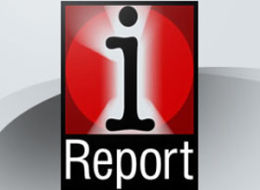The group's chief achievements for the year:
The report also lists CCJIG’s goals for the coming year. Some of those goals reflect perceived weaknesses; their order of priority is to be decided by the in-coming officers.
- Membership jumped by about 30 per cent to 116, from 89 a year ago. Of those registered members, 57 were female; six identified themselves as African-American, two as Asian-American, and 12 as International.
- CCJIG emerged as AEJMC’s largest interest group (by number of registered members), as announced by Council of Divisions chair Kimberly Bissell at the mid-winter meeting in Louisville, Kentucky, on 6 Dec. 2008.
- Entries for the 2009 research paper competition increased 50 per cent to 27 from 18 a year ago, including a record 14 graduate student paper submissions.
- An update of CCJIG’s research bibliography was published.
- New collaborations (Law & Policy and History; also Harvard University and MIT) were established for convention activities. Old collaborations were maintained (Community Journalism, Media Ethics, Newspaper, Council of Affiliates).
- The CCJIG blog, with more than 120 posts, became a primary catalyst of member discussion, meeting a key goal listed in the previous annual report.
- An additional 100 or so posts on AEJMC Talk, many of them repeats or elaborations of CCJIG blog posts, exposed the larger AEJMC membership to civic and citizen journalism discussions.
- Three newsletters (Fall 2008, Spring 2009, and Summer 2009) were published and circulated inside and outside of the group by newsprint and e-mail, each to about 200 receivers.
- As of 30 July 2009, CCJIG's account had a balance of $3766.50.
- CCJIG secured a $400 travel grant from AEJMC to fund the 2009 Boston convention travel of a non-member panelist from New York.
The group's goals for 2009-10:
I wish to record my deep appreciation for the devoted service to our group in 2008-09 by fellow officers Mary Beth Callie, Deborah Chung, Burton St. John, Kirsten A. Johnson, Glenn Scott, Jeff South, Serena Carpenter and Clyde Bentley.
- Facilitate a discussion of CCJIG possibly applying to be an AEJMC Division, in a light of the group's quickly rising membership, the ubiquity of user-generated media, and the burgeoning scholarship of citizen journalism.
- Maintain the CCJIG blog as a primary catalyst of member discussion, partly by encouraging blog participation by a cross-section of the membership.
- Increase membership of minority and International scholars by 5 per cent overall.
- Facilitate two or three Teaching panels in Denver 2010 (in Boston 2009 the group had only one) so that a relative balance may be restored between CCJIG’s Research, Teaching and PF&R activities.
- Increase submissions of research papers by 10 per cent (from the 27 papers in Boston 2009) and enhance the quality of scholarship, particularly that related to citizen-journalistic responsibility.
- Maintain an updated bibliography, preferably annotated.
- Facilitate an increase of 10 per cent in submission of research papers related to (a) newer and rapidly evolving technologies such as Twitter or its progeny, or (b) the impact of new writing styles on citizen-journalistic credibility or responsibility.
- Maintain overall acceptance rate of research competition papers at the current 55.55 per cent to par a course set by the Research Committee (known as the "50 per cent guideline").
- Publish a teaching compendium to address the curriculum, content and pedagogy areas of the Teaching Committee standards; particular effort may be needed from CCJIG’s teaching standards chair (this will be a goal carried forward from 2007-08).
- Organize a symposium or other meeting, online or offline, to mark the 20th anniversary – in 2010 – of James Batten's 1990 address that was a bellwether in the citizen journalism movement (this will be a goal modified and carried forward from 2007-08).
- Continue the top paper awards. (Re-institution of the two $151 "best paper" awards in 2008 may explain part of the 50 per cent jump in paper submissions for Boston 2009).




